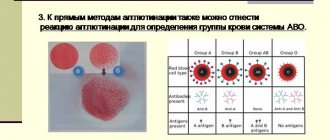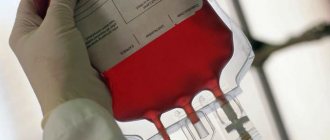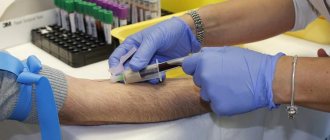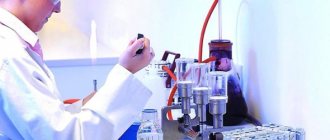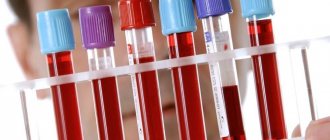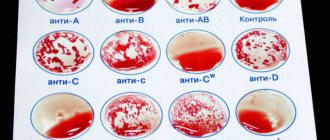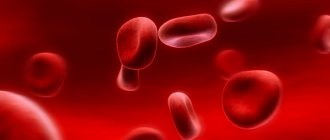Blood is the main carrier of information about the human body. Today, there are 4 groups and 2 types of this substance. Each blood group has its own characteristics. In addition, it is this component that helps to develop certain character traits and preferences in a person. Today we have to understand what 2 positive blood group is. Characteristics, compatibility and nutritional features are the topics that will be covered next. All the information offered to your attention may pleasantly surprise you. Few people even think about how a person’s blood affects his life.
Total information
Blood is the most informative unit of the human body. Her group is a genetic trait that does not change throughout life. No matter the circumstances, the blood always remains the same. It is laid in a person in the womb, and then accompanies the citizen throughout his life.
Today in science there are, as already mentioned, 4 blood groups: first, second, third and fourth. Blood group 2, according to statistics, is the most common. About 1/3 of the entire population of the Earth are its owners. This blood is often called the blood of landowners. This group is considered the oldest, it existed even before the mixing of human races.
Interesting Facts
As already mentioned, there are 2 types of blood - positive or negative. The most common option is the first. 2 positive blood group, the characteristics of which will be presented below, is present in a larger number of the population around the world.
It is noted that this type of blood appeared only after the 1st. Some suggest that this is related to the development of humanity. Primitive people were able to eat carbohydrates. They began to engage in gathering and farming. During this, the 2nd blood group was formed.
If you briefly describe people with this “substance”, you will notice that they are sociable and flexible. In addition, they tend to idealize the world. People with blood type 2 are excellent organizers.
Second GC (Rh-positive): characteristics of origin
Farmers come from African macrogroups A and B. Haplogroup B is found in sub-Saharan Africa, especially in the tropical forests of West and Central Africa. It contains macrogroups C and F. Like Mu, Tau contains D and E groups with YAP polymorphism, although the E haplogroup is a much more common haplogroup in African agriculturalist genotypes.
E3a is thought to be associated with a group that spread agriculture across central and southern Africa during the last 3,000 years. Bantu culture was the agent of spread of this agricultural revolution. Another variant of the haplogroup of the agriculturalist genotype is the Y haplogroup, which has the highest prevalence among Europeans.
Read also: TSH norms and deviations after removal of the thyroid gland
About genetics
Now a little about the genetic properties of the studied information unit of the human body. The second blood group is designated as A (II). This is exactly the interpretation proposed in the AB0 system. The only thing that distinguishes this blood group is the presence of A-antigens in red blood cells.
In order for the properties of an information unit to be inherited by a child, one of the parents must have a similar antigen. Accordingly, positive blood group 2, the characteristics of which are given below (and negative ones too) can be combined with other blood. There are 3 different combinations in total.
It is necessary to understand genetic characteristics at the stage of planning a child. The thing is that problems with conception often occur due to the characteristics of the parents’ blood. In addition, complicated pregnancy and health problems in the child can also be associated with blood. Especially with the Rh factor.
If the baby’s parents have the same antigens, then the child will definitely inherit them. Otherwise, the strongest component will “win.” It can come from either the mother or the father.
What is the AB0 system?
All epitopes or phenotypes resulting from different alleles of the same gene or closely related genes belong to the same blood group system. Blood is a liquid tissue that can be easily transferred from one person to another.
Despite the identical cellular composition of this tissue, there is variability or polymorphism of various elements, which makes transfusion between certain groups of people impossible.
Persons with the same characteristic are said to belong to the same blood group. These characteristics are demonstrated by hemagglutination techniques using antibodies and lectins. In case of problems, molecular biology methods can be used.
The discovery of the AB0 system, the first of the classifications, by Karl Landsteiner in 1900 provided insight into why some blood transfusions were successful while others ended tragically. It was he who determined how blood groups and Rh are designated today. Antigens are molecules that cover the surface of all cells in the body and contribute to its identity. They become targets for antibodies when they are identified as foreign.
- Blood transfusion according to blood groups: rules. Universal donors. Blood group compatibility table
Antibodies are molecules produced by B cells of the immune system that react with antigens not belonging to the body. They attack foreign organisms. Some antibodies are made "on demand" (protection against bacteria and parasites), others exist naturally in the body (which was discovered using the AB0 system).
When an antibody (or lectin) specifically binds to an antigen on the surface of red blood cells, it causes agglutination, sometimes hemolysis (destruction) of the latter. Agglutination can be either fleeting or appear without significant symptoms. In the first case, the victims need emergency medical care.
The discovery of blood groups is associated with mastering the practice of blood transfusion. The first such procedures, often with fatal consequences for the patient, were performed before the beginning of the 19th century in the West. Although Pope Innocent VIII died in 1492, Jean Baptiste Denis performed the oldest known and successful transfusion under Louis XIV on June 15, 1667. The practice of transfusion without proper knowledge was excessively dangerous, so much so that the Parliament of Paris banned the practice in 1668, despite impressive successes.
In 1900, the Austrian physician and biologist Karl Landsteiner showed that mixing the blood of different people can lead to agglutination. He discovered two types of substances: agglutinogens on red blood cells and agglutinins in serum.
In 1901, Karl Landsteiner discovered groups A, B and 0, while Alfred von Decastello and Adriano Sturli discovered AB in 1902. Transfusion became a normal practice after 1911, when the American scientist Ruben Ottenberg showed that isoagglutination groups must be taken into account.
Karl Landsteiner, in collaboration with Philipp Lewin, discovers the groups M, N and P in 1925. In 1930, Landsteiner received the Nobel Prize in Physiology or Medicine for his work. Landsteiner, Alex Wiener, Levin and Stateson discovered the Rh factor between 1939 and 1940. These two systems remain the most important both in medical practice and historically, since they provide the genetic and immunological basis for all subsequent studies of other systems.
Blood type of parents and children
Next we will talk about what blood type babies can get. It depends on many factors. Suppose the parents have 2 positive blood group. What will the child have?
In order to answer this question correctly, it is necessary to thoroughly study genetics. But for ordinary people, scientists have come up with various calculators and compatibility tables.
If the parents have blood type 2+, most likely the child will also have A (II). But the Rh factor can be negative. In addition, it is possible that the baby will have blood type 1. This is normal, although very rare. It occurs in approximately 6% of cases.
To be able to give birth to a baby with blood type 2, the following combinations of this substance must be present in the parents:
- 2nd and 4th;
- second or fourth + 1st (without antigen);
- fourth or second + 3rd.
Parents with blood types 1 and 3 will never produce a child with blood types 2. All this is due to the lack of antigens. Such a combination is a reason for a medical examination. The point is that if the mother and father have blood types 1 and 3, they cannot be the parents of a baby with group 2.
Second group by inheritance
The child will inherit the second group if one of the parents is a carrier of the A-antigen. The following combinations are possible:
- second and fourth (A2+AB4),
- second and first (A+0),
- second and third (A+B),
- fourth and first (AB+0),
- fourth and third (AB + B).
The probability as a percentage can be tracked in the table (see Table 3).
Table 3. Inheritance of blood groups, %.
| Mother | Dad |
| First (I) | Second (II) | Third (III) | Fourth (IV) | |
| First (I) | I – 100% | I – 50% | I – 50% | II – 50% |
| II – 50% | III – 50% | III – 50% | ||
| Second (II) | I – 50% | I – 25% | I – 25% | II – 50% |
| II – 50% | II – 75% | II – 25% | III – 25% | |
| III – 25% | IV – 25% | |||
| IV – 25% | ||||
| Third (III) | I – 50% | I – 25% | I – 25% | I – 25% |
| III – 50% | II – 25% | III – 75% | III – 50% | |
| III – 25% | IV – 25% | |||
| IV – 25% | ||||
| Fourth (IV) | II – 50% | II – 50% | I – 25% | II – 25% |
| III – 50% | III – 25% | III – 50% | III – 25% | |
| IV – 25% | IV – 25% | IV – 50% |
A combination of the first and third blood groups will never give a second blood group - this factor is often taken into account in forensic examinations to establish paternity or maternity.
Blood compatibility during transfusion
But this is not all the interesting and important facts. 2 positive blood group, the characteristics of which will be fully studied further, has its own characteristics of compatibility during transfusion. It is at this moment that the Rh factor must be taken into account. Any blood transfusion center clarifies the donor’s blood type before starting the process. Otherwise, you may lose the patient.
The 2nd positive blood group does not have very extensive compatibility. This means that not everyone can transfuse it. Such people can act as donors for patients with 2nd or 4th positive blood groups. As a recipient, citizens with group 2+ can receive blood groups 1 and 2. In this case, the Rh factor can be anything - both positive and negative.
A+ does not combine with other blood in any way. As already mentioned, this blood group has very limited compatibility. This fact should be taken into account by all healthcare professionals.
Diet and sport
Taking into account the usefulness and compatibility of products (Table 4), various diets have been developed, in which the main emphasis is on plant foods.
If in sports, positive dynamics of weight loss and improvement of the body are observed when practicing yoga, callanetics (this is a selection of static exercises aimed at contracting and stretching muscles), Pilates, and athletics.
Blood and character
2 positive blood group, the characteristics of which are presented to our attention, endows its carriers with certain character traits. Some believe that it is blood that influences human behavior.
People with the 2nd positive blood group have a decent attitude towards loved ones, friends and relatives, a tendency to work in groups, sympathy and care for those who are dear to them.
Such people are excellent leaders. Only in reality they usually give primacy to others. People with A+ dream of recognition and leadership, but carefully hide it. Such behavior often leads to internal feelings and stress.
What diet to follow
The key to a successful diet for people with agricultural characteristics and Rh 2-positive BG is to reduce the fructose content in the diet. Fructose is recommended for diabetics because its glycemic index is significantly lower than glucose, sucrose and starch. But it has been suggested that excess fructose consumption may cause insulin resistance, obesity, elevated LDL cholesterol and triglycerides, leading to metabolic syndrome.
Read also: How many blood tests are done, and what are the nuances of the study?
A number of reports indicate a link between fructose consumption and obesity, especially central obesity, which is generally considered the most dangerous type. Unlike glucose, fructose is almost completely metabolized in the liver. The addition of single sugar molecules (fructose, glucose) to proteins leads to stimulation of tissue glycation and the formation of AGEs, which becomes a possible cause of pancreatic damage.
Fructose appears to be just as dangerous as glucose in this regard, and is therefore not a good sugar substitute. So vegetarians are also advised to avoid taking this monosaccharide.
Advice! Most fructose is consumed in the form of corn syrup, which is processed by glucose isomerase enzymes. This enzyme converts some of the glucose into fructose, thereby making it sweeter. Farmers should avoid foods containing corn syrup (ketchups, jams, confectionery) in their daily menu.
About choosing a profession
Who is the best person to work for carriers of the 2nd positive blood group? To do this, you need to pay attention to the characteristics of a person’s character. Nature has come up with many professions for such people.
All the previously mentioned features should not be overlooked. People with blood type 2 (positive) are excellent teachers, doctors, and social workers. They work wonderfully with personnel and can help in election campaigns. It is in these areas that it is recommended to choose a profession for such citizens.
Health risks
But this is not all the interesting and important facts. The compatibility of blood groups 1 and 2 (positive) is now clear. Moreover, it is now clear what character traits the carriers of this informational genetic unit are endowed with. An extremely important point is the health status of a person with A+.
Some believe that blood type has a serious impact on the human body. In addition to character traits, people acquire certain vulnerabilities. For example, such citizens have the following characteristics:
- low immunity that occurs due to infections, stress, poor diet or physical activity;
- increased blood clotting;
- tendency to thrombosis;
- impaired absorption of proteins and fats;
- low stomach acidity.
Accordingly, 2 positive blood group, the compatibility of which we already know, gives a person the following vulnerabilities:
- diseases of the cardiovascular system;
- allergic reactions;
- increased susceptibility to foodborne infections;
- predisposition to gastritis, pancreatitis;
- risks of developing malignant tumors.
Perhaps these are all the health features that need to be remembered. What else important can you learn about people with positive blood group 2?
About nutrition
For example, it is recommended to pay special attention to nutrition. For the category of people under study, it implies a gentle regime. How should nutrition be organized according to blood type? 2 positive (the table of permitted products will be presented below) blood is not only a tendency to leadership, but also an organization for the prevention of obesity.
Accordingly, you need to eat right. It is noted that many people with A+ tend to be vegetarians. Their main diet is vegetables and fruits. Vegetable oils are also beneficial. For example, flaxseed or olive. Cereals allowed for consumption are buckwheat, rice, millet, barley. Don't forget about beans and lentils either. A+ cereals are a great menu item.
Among vegetables and fruits, preference should be given to those that enhance the formation of gastric juice. For example: cherries, oranges, apples, pineapples, beets, carrots, bell peppers, cucumbers. Spices are not recommended. You can leave only the mustard.
Drinks recommended for all carriers of blood type 2+: coffee, tea, sour juice, wine (red).
Seafood and delicacies can be consumed, but in limited quantities. Garlic, ginger, soy sauce and drinks with malt are also not recommended. Despite this, they are not prohibited. Soy substitutes are allowed to be used without restrictions.
